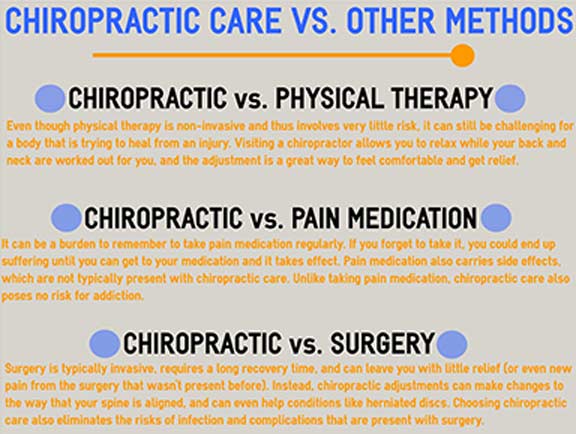Daily Practices That Cause Pain In The Back And Methods For Avoidance
Daily Practices That Cause Pain In The Back And Methods For Avoidance
Blog Article
Web Content Created By-Love Glud
Maintaining correct posture and avoiding common pitfalls in day-to-day activities can considerably impact your back health. From how you rest at your workdesk to just how you raise heavy items, tiny changes can make a large difference. Imagine a day without the nagging pain in the back that prevents your every relocation; the solution might be less complex than you think. By making chiropractic care center of tweaks to your everyday habits, you could be on your method to a pain-free presence.
Poor Stance and Sedentary Lifestyle
Poor pose and a less active way of life are 2 major contributors to pain in the back. When you slouch or hunch over while resting or standing, you placed unneeded stress on your back muscular tissues and spine. This can lead to muscle discrepancies, tension, and ultimately, chronic back pain. In addition, sitting for long periods without breaks or physical activity can deteriorate your back muscle mass and cause tightness and discomfort.
To deal with bad stance, make an aware effort to sit and stand straight with your shoulders back and aligned with your ears. Bear in mind to keep your feet level on the ground and avoid crossing your legs for extensive periods.
Incorporating just click the next document extending and enhancing exercises right into your daily routine can likewise aid enhance your stance and alleviate neck and back pain related to a sedentary lifestyle.
Incorrect Lifting Techniques
Incorrect lifting methods can dramatically contribute to back pain and injuries. When you raise hefty objects, remember to bend your knees and use your legs to lift, instead of depending on your back muscular tissues. Prevent twisting your body while lifting and keep the object near your body to minimize pressure on your back. try this website to preserve a straight back and prevent rounding your shoulders while raising to prevent unneeded stress on your spinal column.
Constantly assess the weight of the item before lifting it. If it's also heavy, request help or usage equipment like a dolly or cart to transfer it safely.
Remember to take breaks during raising tasks to provide your back muscle mass a chance to rest and protect against overexertion. By applying appropriate lifting techniques, you can prevent back pain and reduce the risk of injuries, ensuring your back remains healthy and balanced and strong for the long-term.
Lack of Routine Exercise and Stretching
A sedentary way of living lacking regular workout and stretching can significantly contribute to pain in the back and pain. When you do not take part in physical activity, your muscle mass end up being weak and inflexible, resulting in bad posture and enhanced stress on your back. Routine exercise assists strengthen the muscular tissues that support your back, enhancing security and decreasing the risk of back pain. Including extending into your routine can additionally improve adaptability, protecting against tightness and pain in your back muscular tissues.
To prevent pain in the back caused by an absence of exercise and extending, aim for a minimum of thirty minutes of moderate physical activity most days of the week. Consist of exercises that target your core muscular tissues, as a strong core can help relieve pressure on your back.
Additionally, take breaks to extend and move throughout the day, particularly if you have a workdesk work. Straightforward stretches like touching your toes or doing shoulder rolls can assist eliminate stress and stop neck and back pain. Focusing on routine workout and extending can go a long way in preserving a healthy back and lowering discomfort.
Conclusion
So, bear in mind to stay up straight, lift with your legs, and remain active to prevent back pain. By making simple adjustments to your daily practices, you can prevent the discomfort and constraints that include neck and back pain. Deal with your spinal column and muscles by exercising excellent pose, correct training techniques, and regular exercise. Your back will certainly thanks for it!
